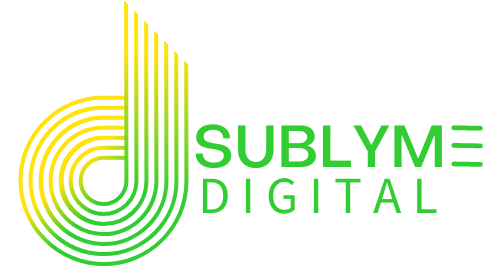7 Proven Techniques for Content Inspiration in 2025
Key Takeaways
- Google Trends is a goldmine for discovering trending topics and generating fresh content ideas.
- It helps you identify seasonal trends, compare search terms, and explore related queries for niche opportunities.
- You can use it to analyze regional interest, spot emerging trends, and optimize your content for SEO.
Coming up with great content ideas can feel like pulling teeth some days. You sit there, staring at your computer, waiting for inspiration to strike. And sure, sometimes it does. But what about the other times?
1. Find Seasonal Trends
Let’s start with something simple but incredibly effective: seasonal trends. Every year, certain topics spike in popularity at the same time. Think holiday shopping, summer vacations, or back-to-school season.
Google Trends makes it ridiculously easy to spot these patterns. Just type in a term like “holiday gift ideas” and you’ll see exactly when interest peaks each year. This isn’t just useful—it’s essential for planning your content calendar.
Imagine you’re a fitness blogger. You notice that searches for “new year workout plans” skyrocket every January. That’s your cue to create a series of blog posts or videos aimed at people setting fitness goals for the new year. By publishing right as interest peaks, you’re positioning yourself as a timely and relevant resource.
2. Compare Search Terms
Ever feel torn between two content ideas? Like, should you write about “vegan recipes” or “keto recipes”? Google Trends can help you decide by letting you compare multiple search terms side by side.
This feature is a game-changer. You can see which term has more search volume, where it’s trending, and even how interest has changed over time. But here’s the thing—it’s not always about picking one over the other. Sometimes, the comparison reveals opportunities you didn’t even think of.
For example, if both “vegan recipes” and “keto recipes” are popular, why not create a post about “vegan keto recipes”? It’s a niche topic that could attract readers from both audiences.
3. Explore Related Queries
One of my favorite features in Google Trends is the “Related Queries” section. It’s like a little treasure chest of content ideas, just waiting to be opened.
Here’s how it works: when you search for a term, Google Trends shows you other keywords and questions people are searching for in connection with that term. These related queries often reveal niche topics or audience pain points you might not have considered.
Let’s say you’re researching “work-from-home tips.” In the related queries, you might find terms like “how to stay productive at home” or “best home office setups.” Each of these could easily become its own blog post, video, or social media campaign.
That’s where Google Trends comes in. It’s not just another tool—it’s like a secret weapon for content creators. It shows you exactly what people are searching for, what’s gaining traction, and even where those searches are happening.
In this blog, I’ll walk you through 7 genius ways to use Google Trends to create content that grabs attention. Some of these strategies might feel like no-brainers, but others might surprise you. Either way, they’ll help you craft content that resonates with your audience and keeps them coming back for more.
Google Trends isn’t just a tool—it’s your content marketing crystal ball, revealing what your audience wants before they even know it.
4. Analyze Regional Interest
Do you know where your audience is? Because Google Trends does. It shows you which regions have the highest interest in specific search terms, and this information can be a game-changer for your content strategy.
Let’s say you run a travel blog. You notice that searches for “beach vacations” are trending in California. That’s your cue to create content tailored to that audience. Maybe a guide to the best beaches in California or tips for planning a beach vacation.
But it’s not just about localizing your content. Regional data can also inform your advertising strategy. If certain keywords are performing well in specific areas, you can target those regions with geo-specific ads to maximize your reach and ROI.
5. Spot Emerging Trends
The “Trending Searches” section in Google Trends is like a sneak peek into what’s about to blow up. It shows you what topics are gaining traction right now, giving you the chance to create timely content that captures attention before the trend becomes oversaturated.
For example, if you see a sudden spike in searches for a new fitness gadget, you can act quickly to create a review, tutorial, or comparison post. The key here is speed—emerging trends often have a short window of relevance, so the sooner you publish, the better.
This approach works especially well for social media content. Platforms like Twitter and Instagram thrive on real-time engagement, so jumping on a trending topic can help you gain visibility and attract new followers.
6. Plan Your Content Calendar
Google Trends isn’t just for finding ideas—it’s also a fantastic tool for planning your content calendar. By analyzing search data, you can map out content ideas that align with your audience’s interests throughout the year.
Start by using the “Past 12 Months” filter to identify trends for the upcoming year. Then, plot those trends on your calendar. For example, if you know that searches for “spring cleaning tips” peak in March, you can schedule your content to go live in late February or early March.
The best part? A well-planned calendar gives you room to breathe. You’re not scrambling for ideas at the last minute because you’ve already done the legwork.
7. Optimize Your Content for SEO
At its core, Google Trends is an SEO tool. It helps you identify high-volume keywords and trending topics, which you can use to optimize your content for search engines.
Let’s say you notice that “sustainable fashion” is trending. You could create a blog post titled “10 Ways to Build a Sustainable Wardrobe” and naturally incorporate the keyword throughout the content.
If you’re looking to dive deeper into content marketing strategies for eCommerce, check out our detailed guide on content marketing for eCommerce. It’s packed with actionable tips to help you create engaging, high-converting content for your online store.
We Build Cool

Success Stories
365 Data Centers
Discover how we rapidly rebuilt and optimized a 30-page website for 365 Data Centers, restoring their online presence and managing digital ad campaigns across key regions to drive engagement and growth.
XTECH Football Pads
Discover how we transformed XTECH Football Pads‘ digital presence, boosting their online sales and tripling website traffic through innovative website development and user experience enhancements.
BeEarth Foundation
Discover how we partnered with the BeEarth Foundation to develop a website that aligns with their mission of sustainability and global engagement. Our work has significantly increased their online visibility and engagement, supporting their efforts to promote sustainable development.
We Recycle Solar
Learn how we illuminated digital success for We Recycle Solar by completely redesigning their website to reflect their leadership in the growing solar recycling industry and implementing strategic digital advertising campaigns that enhanced their visibility at key industry events.
Preferred Home Health Care & Nursing Services
Explore how we elevated the digital presence of Preferred Home Health Care & Nursing Services by enhancing their website for better lead generation, building a dedicated site for staff recognition, and optimizing SEO for their location pages.
What Our Clients Say: Elevating Online Success
Final Thoughts
Google Trends is more than just a tool for content creators—it’s a strategic ally. By using it to identify seasonal trends, explore related queries, and analyze regional data, you can create content that resonates with your audience and drives engagement.
But here’s the thing: success takes consistency. Use Google Trends regularly, experiment with different strategies, and refine your approach based on what works best. Over time, you’ll see how this simple tool can transform your content strategy.
Ready to take your content marketing to the next level? Start exploring Google Trends today and unlock endless possibilities for your content.
FAQs
Answer: Google Trends is a free tool from Google that analyzes the popularity of search queries over time. It provides insights into trending topics, regional interest, and related queries, making it a powerful resource for content creators and marketers.
Answer: You can use Google Trends to identify seasonal trends, explore related queries, analyze regional interests, and spot emerging topics. These insights help you create timely, relevant, and engaging content.
Answer: Seasonal trends include topics like holiday gift guides, summer travel tips, or back-to-school shopping. For example, searches for “pumpkin spice recipes” typically spike in fall, making it a great time to create related content.
Answer: Absolutely! Google Trends helps you identify high-volume keywords and trending topics. You can use this data to optimize your content for search engines, improving your chances of ranking higher in search results.
Answer: The “Related Queries” section in Google Trends is perfect for uncovering niche topics. For instance, if you search for “work-from-home tips,” related queries might include “best home office setups” or “how to stay productive at home.”
Answer: Not at all! Google Trends is equally valuable for small businesses, startups, and individual content creators. It’s a versatile tool that can be tailored to suit any scale or niche.
Answer: It’s a good idea to check Google Trends regularly—at least monthly. This helps you stay updated on emerging trends and plan your content calendar effectively.
Answer: Yes! At Sublyme Digital, we specialize in data-driven content marketing strategies. Whether you need help analyzing trends or creating engaging content, we’re here to support your goals.
Let's Build Something Sublyme
Need help creating data-driven content? Sublyme Digital specializes in content marketing strategies that deliver results. Contact us today for a free consultation!
